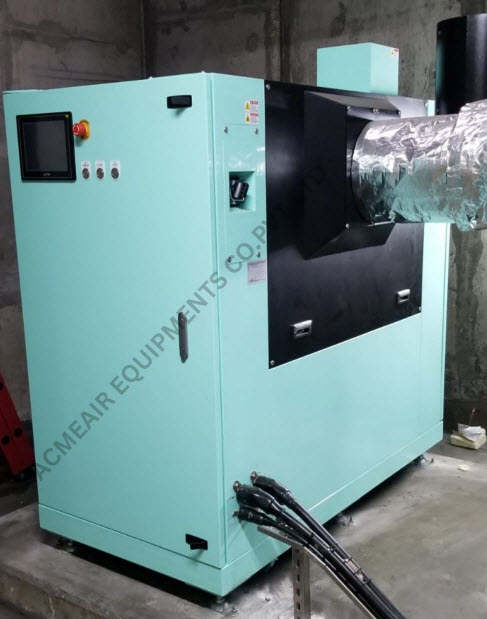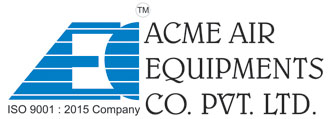Table of Contents
In the world of industrial air compression, two primary contenders vie for dominance: Turbo Blowers and Positive Displacement Blowers. While both serve the fundamental purpose of air compression, their mechanisms and operational characteristics diverge significantly, leading to distinct advantages and applications in various industrial settings.
Understanding Turbo Blowers
Turbo Blowers, sometimes referred to as turbine blowers, utilize a centrifugal impeller rotating at exceptionally high speeds to compress air. These blowers are engineered for high flow rates and differential pressures, making them ideal for applications requiring significant air compression. Key components of turbo blowers include air bearings, precision-machined impellers, and high-speed Permanent Magnet Synchronous Motors (PMSM), capable of rotations up to 20,000 rpm. This design allows turbo blowers to deliver impressive performance and efficiency in demanding industrial environments.
Deciphering Positive Displacement Blowers
Positive Displacement Blowers, also known as Lobe Blowers or Roots Blowers, trace their origins back to the 1860s, credited to the inventive minds of the Roots brothers. These blowers feature a rotary positive-displacement mechanism, typically incorporating twin or tri-lobe configurations. In twin lobe compressors, each rotor possesses two lobes (four per compressor), while tri-lobe machines boast three lobes per rotor (six per compressor). Operating on parallel shafts, the rotors rotate in opposing directions, trapping a definite volume of gas with each revolution. This displaced volume remains consistent across varying operating conditions, ensuring reliable performance.

Deciphering Positive Displacement Blowers
Positive Displacement Blowers, also known as Lobe Blowers or Roots Blowers, trace their origins back to the 1860s, credited to the inventive minds of the Roots brothers. These blowers feature a rotary positive-displacement mechanism, typically incorporating twin or tri-lobe configurations. In twin lobe compressors, each rotor possesses two lobes (four per compressor), while tri-lobe machines boast three lobes per rotor (six per compressor). Operating on parallel shafts, the rotors rotate in opposing directions, trapping a definite volume of gas with each revolution. This displaced volume remains consistent across varying operating conditions, ensuring reliable performance.
Choosing the Right Blower
The age-old question of which blower reigns supreme ultimately hinges on the specific requirements of the application at hand. Application specialists emphasize the importance of evaluating factors such as operational demands, environmental conditions, and system intricacies when selecting the appropriate blower type. There is no one-size-fits-all solution; instead, each application warrants careful consideration to determine the optimal blower choice.
Frequently Asked Questions (FAQs) Turbo Blowers and Positive Displacement Blowers
1. What distinguishes Turbo Blowers from Positive Displacement Blowers?
Turbo blowers utilize centrifugal impellers rotating at high speeds to compress air, while positive displacement blowers employ a rotary positive-displacement mechanism, trapping a definite volume of gas with each revolution.
2. What are the key components of Turbo Blowers and Positive Displacement Blowers?
Turbo blowers feature air bearings, precision-machined impellers, and high-speed Permanent Magnet Synchronous Motors (PMSM), whereas positive displacement blowers typically incorporate twin or tri-lobe configurations with parallel rotating shafts.
3. In what applications do Turbo Blowers excel?
Turbo blowers are ideal for high-flow, high-pressure applications requiring significant air compression, such as wastewater treatment plants, aeration systems, and pneumatic conveying.
4. Where are Positive Displacement Blowers commonly used?
Positive displacement blowers find widespread use in applications such as pneumatic conveying, wastewater treatment, chemical processing, and power generation, where reliable and consistent airflow is crucial.
5. How do I determine the most suitable blower for my application?
Choosing between turbo blowers and positive displacement blowers depends on factors such as flow rates, pressure requirements, environmental conditions, and system intricacies. Consulting with application specialists and evaluating specific operational demands is essential for making an informed decision.
About Author

CEO
Mr. Vishwesh Pardeshi is the CEO of Acme Air Equipments Company Pvt. Ltd., an industrial and engineering goods manufacturing company based in Ahmedabad, Gujarat (India). He has taken over the responsibility from founding Partners and Directors of the Company, and is now leading a talented group of professionals since 2020 by bringing in vast industrial and management expertise. By qualification, he holds a Bachelor Degree in Mechanical Engineering and also holds a MBA degree from reputed institutes. Under his leadership, the Company has successfully executed prestigious projects by delivering high quality and world class products from a state of the art manufacturing facility which combines CNC-enabled precision manufacturing and strong after sales support. In line with the Vision, Mission and Core Values of the Organization, Mr. Vishwesh Pardeshi continues to drive Quality, Reliability and Global Expansion at Acme Air Equipments Co. Pvt. Ltd.
Table of Contents
Positive Displacement Blower | Tri Lobe Blowers | Gas Boosters | Cement Feeding System | Dust Collector System | Catalyst Loading / Unloading Systems | Pneumatic Conveyor | Mechanical Vacuum Boosters | Vacuum Pumps | Liquid Ring Vacuum Pump | Water Ring Vacuum Pump | Two Stage Vacuum Pump | Oil Sealed Vacuum Pump | Big Bag Unloading System | Turbo Blower
© 2024 Acme Air Equipments | All Rights Reserved - SEO, GEO & Google Ads by Opal Infotech







